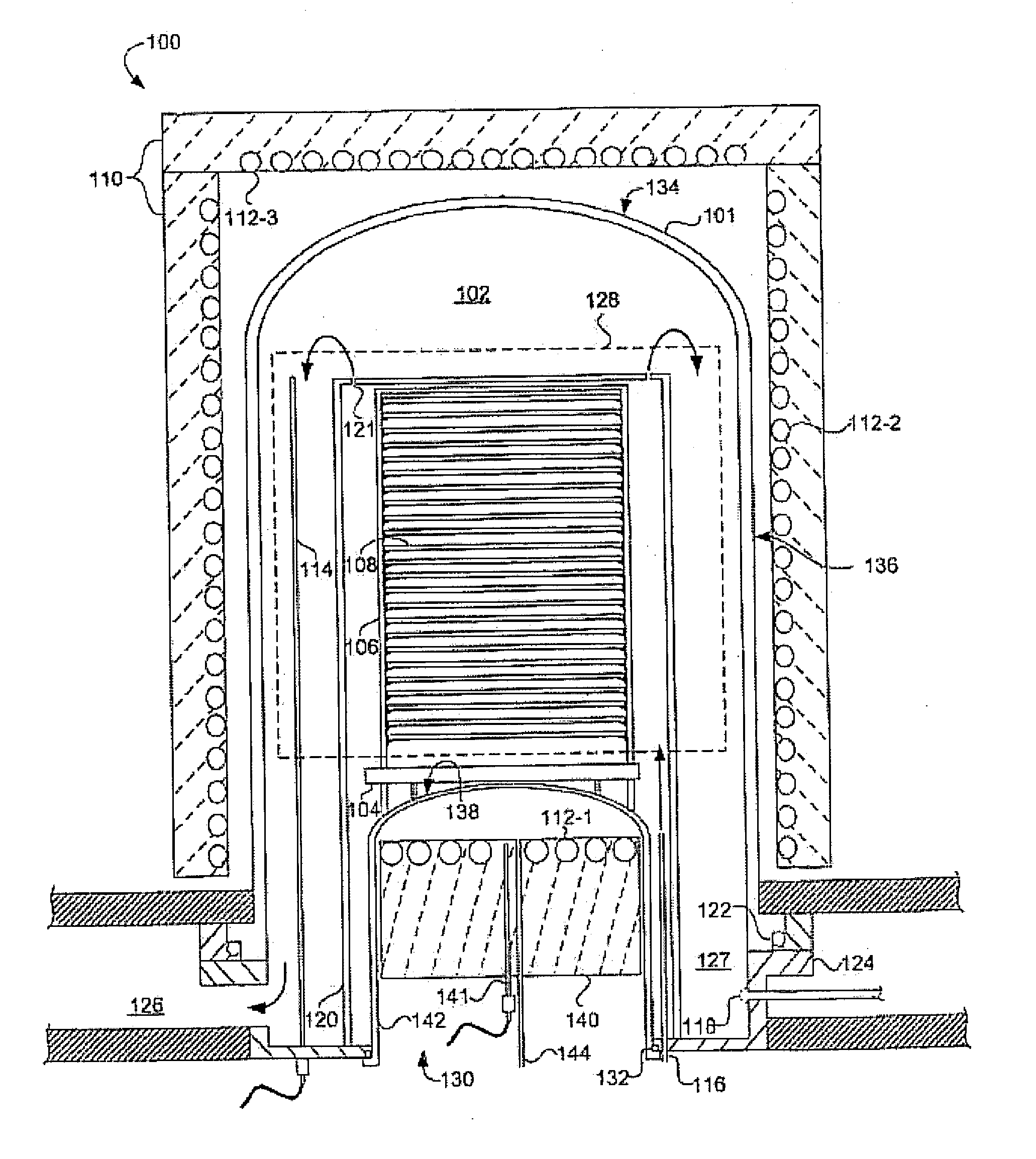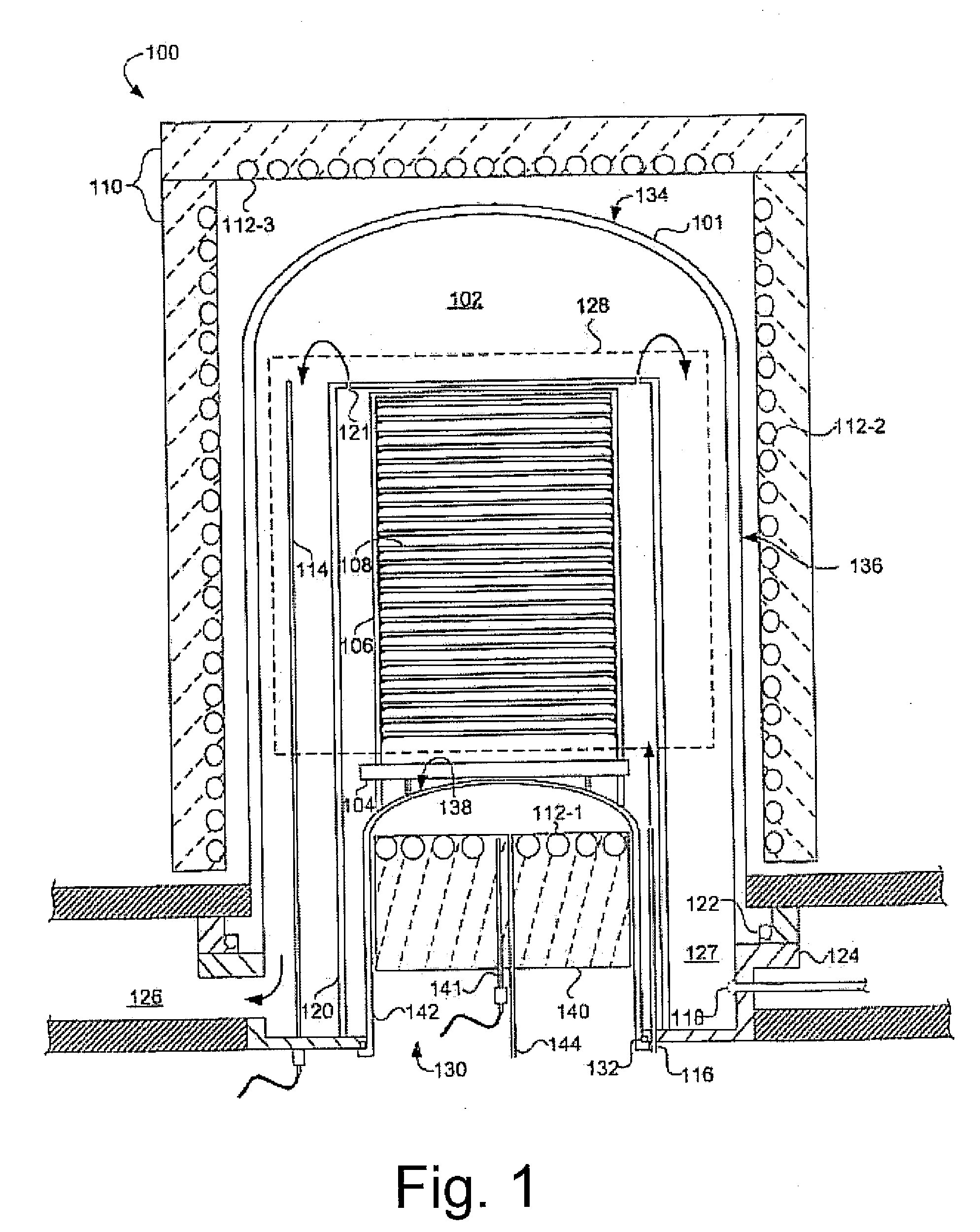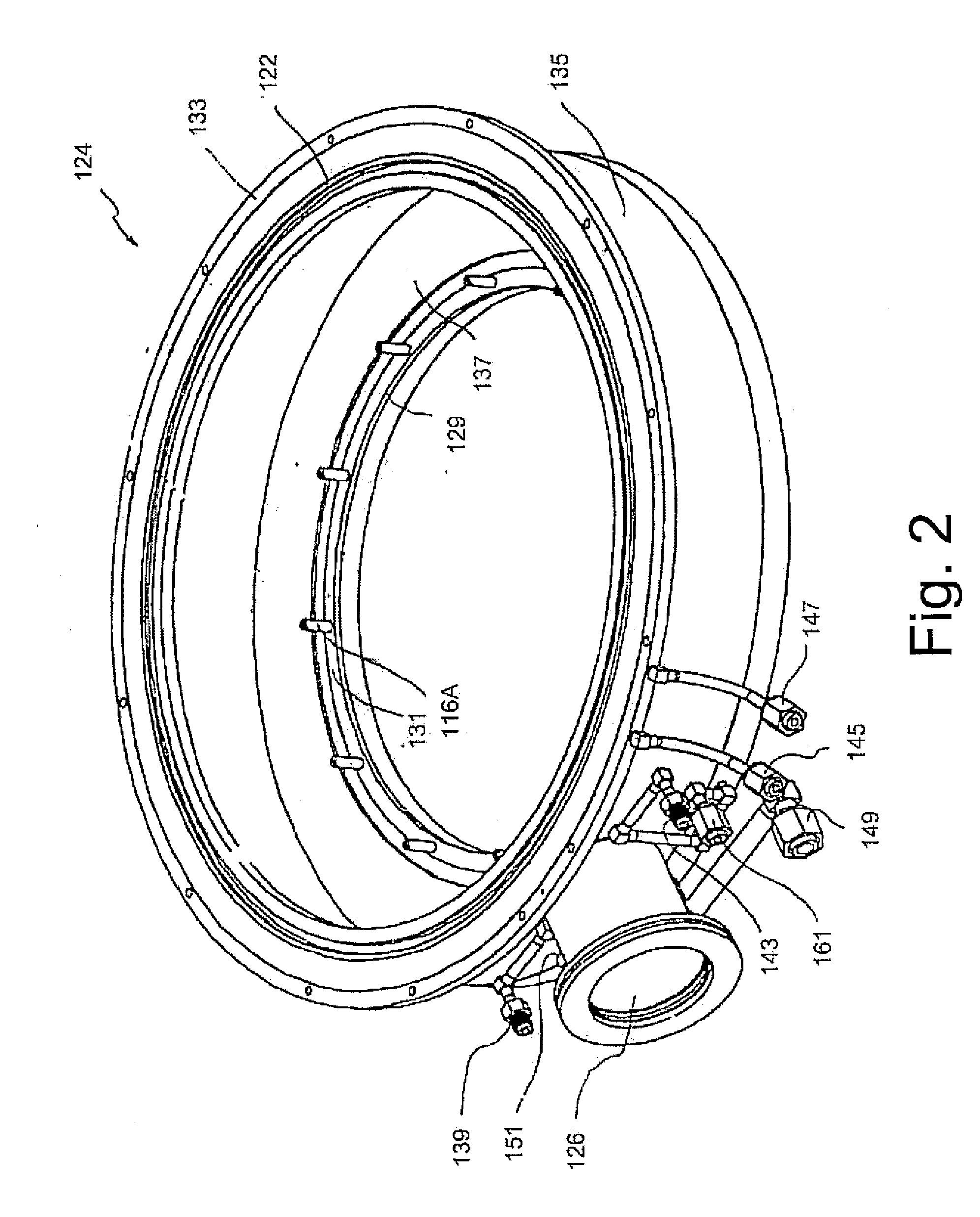Thermal processing system with across-flow liner
- Summary
- Abstract
- Description
- Claims
- Application Information
AI Technical Summary
Benefits of technology
Problems solved by technology
Method used
Image
Examples
Embodiment Construction
[0068] The present invention is directed to an apparatus and method for processing a relatively small number or mini-batch of one or more work pieces, such as semiconductor substrates or wafers, held in a carrier, such as a cassette or boat, that provides reduced processing cycle times and improved process uniformity. In the alternative, the present invention is directed to an apparatus and method for processing a large number or large batch of one or more work pieces, and provides reduced processing cycle times and improved process uniformity.
[0069] By thermal processing it is meant processes in which the work piece or wafer is heated to a desired temperature which is typically in the range of about 350° C. to 1300° C., and can include temperatures as low as 75° C. For illustrative purposes only, thermal processing of semiconductor wafers can include heat treating, annealing, diffusion or driving of dopant material into the wafer substrates, deposition or growth of layers of mater...
PUM
| Property | Measurement | Unit |
|---|---|---|
| Angle | aaaaa | aaaaa |
| Angle | aaaaa | aaaaa |
| Angle | aaaaa | aaaaa |
Abstract
Description
Claims
Application Information
 Login to View More
Login to View More - R&D
- Intellectual Property
- Life Sciences
- Materials
- Tech Scout
- Unparalleled Data Quality
- Higher Quality Content
- 60% Fewer Hallucinations
Browse by: Latest US Patents, China's latest patents, Technical Efficacy Thesaurus, Application Domain, Technology Topic, Popular Technical Reports.
© 2025 PatSnap. All rights reserved.Legal|Privacy policy|Modern Slavery Act Transparency Statement|Sitemap|About US| Contact US: help@patsnap.com



